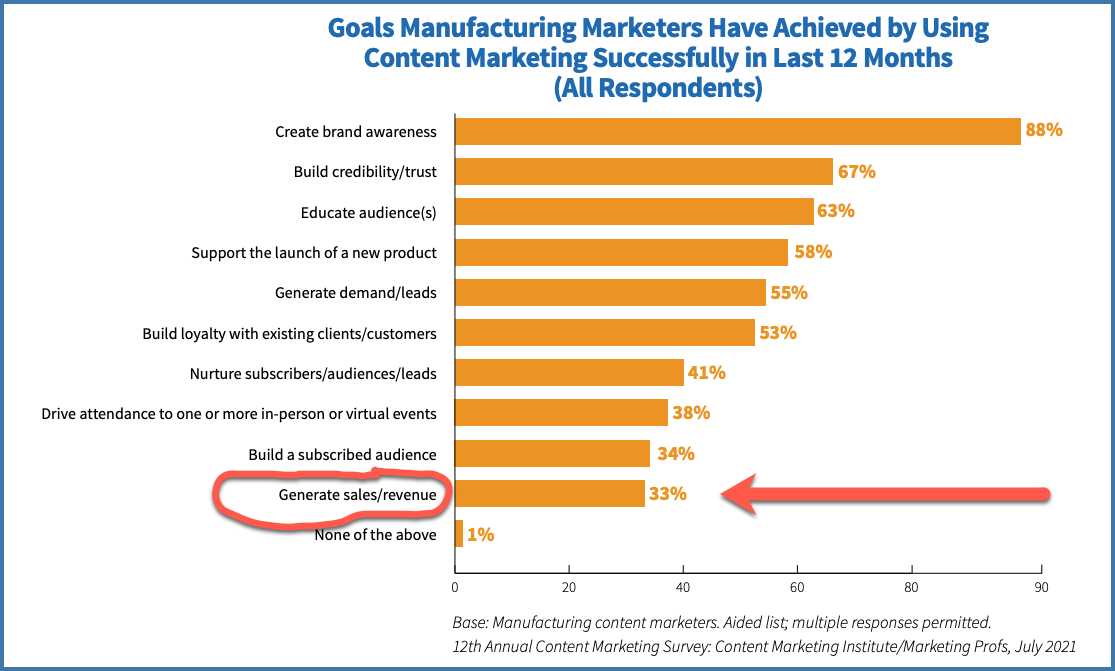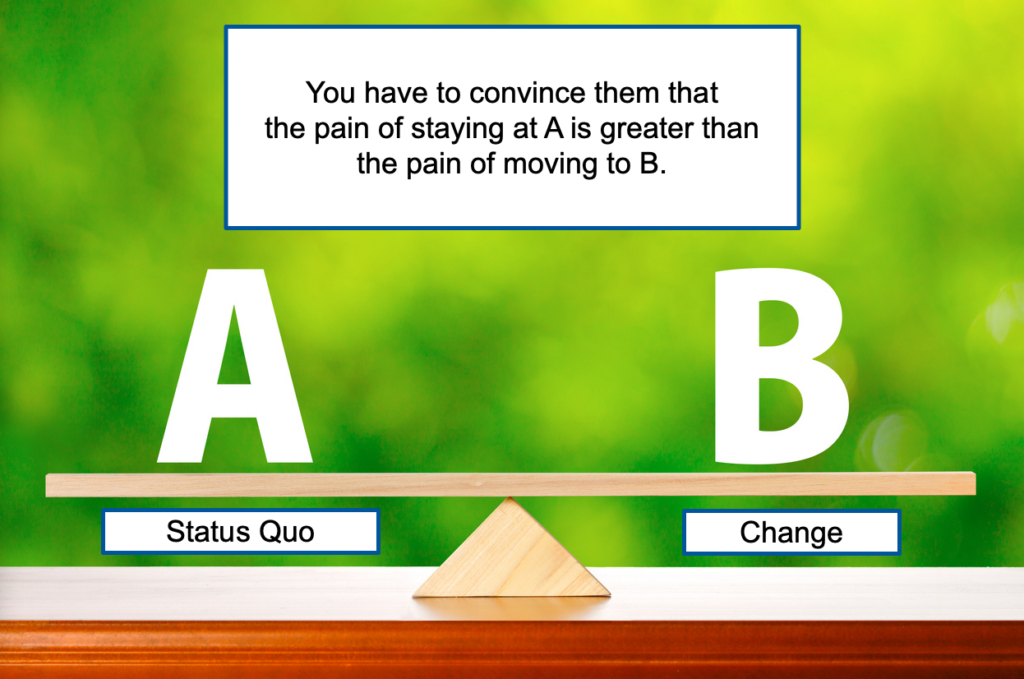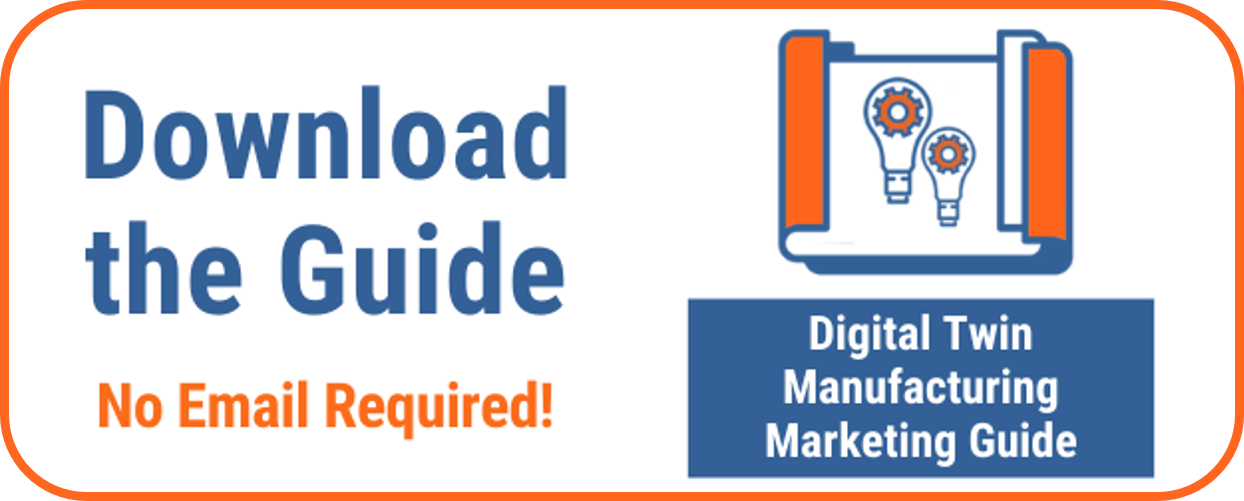According to a report from the Content Marketing Institute, only 33% of manufacturers report that they’ve generated sales from their content marketing.
It’s no wonder this is considered such a sales-driven industry.
Actually, I nearly missed that number the first time I saw it, because it’s buried at the bottom of this graphic:

But, really, this is a huge issue, isn’t it? Don’t we want our marketing dollars to turn into sales revenue?
My clients sure think so.
So we need to figure this out, and fast, because the winds of change are clearly blowing in an online direction.
Up to 58% of sales takes place before talking to a salesperson
If manufacturers don’t see their content marketing generating sales, they’re going to pull back on their budgets. But that won’t solve the big problem: Their customers are looking to complete more of the purchase process online.
57% of the decision-making process is completed online, before a customer even talks to a salesperson.
In the book The Challenger Sale, the market-research firm CEB reports: 57% of the decision-making process is completed online, before a customer even talks to a salesperson.
And that’s today’s environment. In fact, research from Gartner indicates 33% of all buyers desire a seller-free sales experience — a preference that climbs to 44% for millenials.
So what’s the problem? Here are a few reasons why you may not be connecting with new customers.
5 reasons why your marketing might not be working
There can be a myriad of reasons why your marketing isn’t translating into sales. But here are some of the big issues that focus less on the symptoms (e.g., people won’t click on my ad) and more on the underlying causes behind a failing approach.
1. Sales and marketing haven’t defined what constitutes a “lead”
This seems like such a no-brainer, yet it’s the most common problem we see. Marketing operates in a silo, and gets a ton of visits to the website. Then they get someone to fill in a form, or make a call…
…and sales gets the call, but the lead is horrible. The lead is just shopping for price. The lead is looking for a different product. Or, the lead isn’t even a potential customer but instead another sales person trying to sell you something.

So marketing throws up its hands and says sales can’t close leads, and sales says marketing isn’t producing good leads.
Solution: Before you begin a campaign, define what constitutes a lead: Who is it, what do they want, and what stage of the buying process are they in? Make it crystal clear what a lead looks like so once a lead arrives, there can be no debate on whether or not you’ve hit the mark.
2. Your strategy is focused on the person who matters least to the customer
It’s amazing how much manufacturers focus on themselves with their content, advertising, and sales pitches. Customers couldn’t give two s—s about you. They care about themselves.
You probably hear a lot of marketers saying this. But it really goes beyond just writing benefits-driven copy on your website, or using the word “you” instead of “we” in your marketing (which you should do, don’t get me wrong).

Your strategy has to be about how your products and services solve a bigger problem: You have to convince them that the pain of staying in the same place is far greater than the pain of making a change in their routine. And THAT will take some intense focus on the customer.
Solution: Map out the bigger issues that affect your customer. Put your product or service in the context of the big picture. Are there big picture challenges like productivity, employee retention, or supply chain issues that you are helping to solve? Make that the centerpiece of your claim, and move beyond just a capabilities sale.
3. Your marketing is too focused on the top of funnel
We do everything in our power to create the best marketing for the top of funnel. That includes new blog posts, videos, and social media posts. And we most definitely should — that’s critical stuff.
Unfortunately, most marketers don’t watch their analytics, and they don’t look at how many visitors are traveling down the funnel to the key conversion points. Why aren’t those visitors taking you up on your offer?

More time needs to be spent refining and testing that offer. And that, ultimately, stems back to the two issues affecting No. 1 and No. 2 — poor sales and marketing alignment, and an ineffective strategy.
Solution: Before you offer up a bottom of funnel offer (Example: Get a free assessment!), test-drive the offer with your sales team. Have them reach out to prospects and pitch it to them. Join the sales team on these outreach efforts, learn what works, and then implement the results.
4. Your metrics aren’t tied to your strategy
Your metrics can’t just be some pre-programmed report that you pull from HubSpot, Hootsuite, or whatever other marketing tools you’re using.
You need to build your metrics report so that it begins with your marketing strategy and ends with your customers.

For example, if you’re using top of funnel blog posts to get people to your website and then hitting them with a retargeting ad campaign, that campaign should be producing leads. If it isn’t, then you know what needs to be fixed.
Solution: Look for “the critical few” metrics: These are the main actions that must occur in order for you to generate leads. Narrow it down to three or four key actions and then adjust your marketing so you can hit those numbers.
5. Don’t hide: Keep management in the loop on successes and failures
This one might be a bit foreign to marketers out there, but you need to start producing numbers for your management team.
Management pulls the plug on marketing if they see zero results, but they won’t pull it if you show them growth. That includes improvement in targeted areas. If there is a setback, let them know why it occurred and what you are doing to fix it.

Solution: Produce your metrics reports for your management team and highlight the improved areas of growth. Simplify your report, and just focus on a few critical metrics. Make it easy for management to understand; if they don’t understand it, they won’t approve it.
What about branding? And social media? And this? And that?
There are a lot of things you could do in marketing. And just like this post, there are a million and one ideas from experts on things you should focus on.
But when you try to do everything, you wind up accomplishing nothing. So don’t worry about what everyone is saying you SHOULD do. Focus on what you need to do: Help your sales team generate revenue.
Get that baseline of success going — then you can focus on other areas with your marketing.
Many marketers won’t agree with me. They’ll say you should be building your brand, for example. But to me, the most effective way to build a brand is to get happy customers who tell other potential customers how great you are.
And you can’t get those happy customers unless you buck the 30% stat and start generating sales for your company.

